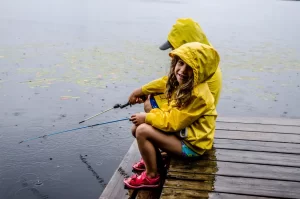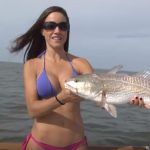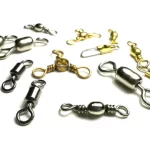While a sunny day on the water is enjoyable, fishing in the rain can be even more productive. A good downpour can activate fish, making them more aggressive and willing to bite. Understanding the factors that contribute to this increased activity can help turn a rainy fishing trip into an unforgettable experience.
Why Fishing in the Rain Can Be More Productive

1. Increased Fish Activity
Rain can stimulate fish into a feeding frenzy. Runoff from heavy rain carries worms, insects, and other food sources into rivers and lakes, drawing fish closer to the surface. Rainfall also oxygenates water and alters temperatures, energizing baitfish and attracting larger predators. Additionally, overcast conditions provide fish with a sense of security from airborne predators, making them more comfortable feeding near the surface.
Barometric pressure plays a role as well. Falling pressure, which often precedes storms, can cause fish to become more active. This is thought to be due to changes in their swim bladders, prompting them to seek deeper water. Fishing during the initial drop in pressure can be extremely rewarding.
2. Bigger Fish Move Closer to the Surface
Larger fish often stay in deeper waters, but heavy rain can disrupt their environment, pushing them toward the surface. Sediment stirred up from the bottom can make lower depths less hospitable, forcing fish like catfish and carp to move up. Rain also cools surface waters, making them more inviting to fish that typically seek deeper, cooler temperatures during hot weather.
3. Less Competition on the Water
Many anglers avoid fishing in the rain, giving those who brave the elements an advantage. On busy lakes, where fish become wary of frequent anglers, a rainy day provides an opportunity to target less-pressured fish in areas typically crowded during clear weather.
Top Tips for Fishing in the Rain
1. Target Creeks and Inlets
Focus on areas where fresh rainwater is flowing into a lake or river. These spots concentrate baitfish and attract predatory species like bass and trout. Look for confluences where clear water meets murky water, as fish tend to gather along these edges to feed.
2. Cover More Water
Rain makes fish more active, meaning they are more likely to roam instead of staying in one location. Explore new spots and adjust your strategy by targeting areas that may not typically hold fish in dry conditions. Rising water levels can also create new structures, such as submerged vegetation or debris, which fish may use for cover.
3. Adjust Your Tackle and Lures
Since fish are more aggressive during a rainstorm, opt for larger, more noticeable lures. Bright, flashy baits resembling wounded prey can be particularly effective in murky water. Topwater lures, often reserved for calm conditions, can work surprisingly well in rainy weather, especially if fish are feeding near the surface.
Safety Considerations: Watch for Lightning
Rainy conditions can enhance fishing, but thunderstorms pose serious risks. If thunder is heard, lightning is nearby. Fishing rods can act as lightning rods, putting anglers in danger. Seek shelter immediately if a storm approaches.
For those prepared with proper rain gear, including waterproof jackets and pants from brands like Simms, Columbia, and Frogg Toggs, fishing in the rain can be a rewarding and exciting experience. A little precipitation shouldn’t deter an angler looking to hook a bigger catch.
Image/Source: WOS





